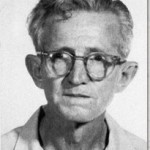Representation, Outcomes, and Fairness in Legal Proceedings
 As my colleague Rebecca Blemberg recently blogged about, California has moved in the direction of recognizing a right to counsel for civil litigants with critical legal needs.
As my colleague Rebecca Blemberg recently blogged about, California has moved in the direction of recognizing a right to counsel for civil litigants with critical legal needs.
The concept of a constitutional right to counsel in certain civil cases is often referred to as “Civil Gideon,” after the Supreme Court decision that established the right to counsel in criminal cases, Gideon v. Wainwright. Critics charge that recognizing a civil version of the right established in Gideon will cause “waste” by increasing litigation. A recent Wall Street Journal law blog post quoted Ted Frank, for instance: “What is clear is that you will never have a simple eviction because every single one of them will be litigated. . . . The rest of the poor will be worse off because of that.”
I guess “waste” is in the eye of the beholder. As a student noted on another blog,
While I understand the drawback of added litigation, I’ve never found it to be particularly persuasive enough to override a law aimed at a greater level of fairness and justice. In most custody cases, an agreement is more likely reached when the party who can afford an attorney bullies the other party into signing something. As for eviction cases, I believe that at the end of a notice period, a landlord must file an eviction case with the court anyway to have the eviction legally recognized. Moreover, the American judicial system can be overwhelming, confusing and inevitably adversarial. While many civil parties successfully file suits pro se, I think it is fair to say that they often lack the knowledge and skills to successfully plead a case.
Indeed, it seems beyond dispute that pro se litigants are, on average, overwhelmingly disadvantaged by lack of representation.

 One of this Law School’s most noteworthy legacies is its production of many of the region’s most outstanding trial lawyers. The legacy was fully evident on Friday, November 6, 2009 at the Civil Trial Evidence and Litigation Conference. The sold-out event served as a “last call for Sensenbrenner Hall” of sorts while featuring a panel that well-represented the many fine trial lawyers who have distinguished themselves as Marquette lawyers. It was my privilege to help organize the conference along with Pat Dunphy (L’76), who conceived of the idea and was the key to assembling the talented panel of Marquette alumni. In light of Friday’s success, Pat and I have already begun discussing next year’s civil litigation conference, which will be held in the Law School’s new venue in Eckstein Hall.
One of this Law School’s most noteworthy legacies is its production of many of the region’s most outstanding trial lawyers. The legacy was fully evident on Friday, November 6, 2009 at the Civil Trial Evidence and Litigation Conference. The sold-out event served as a “last call for Sensenbrenner Hall” of sorts while featuring a panel that well-represented the many fine trial lawyers who have distinguished themselves as Marquette lawyers. It was my privilege to help organize the conference along with Pat Dunphy (L’76), who conceived of the idea and was the key to assembling the talented panel of Marquette alumni. In light of Friday’s success, Pat and I have already begun discussing next year’s civil litigation conference, which will be held in the Law School’s new venue in Eckstein Hall.